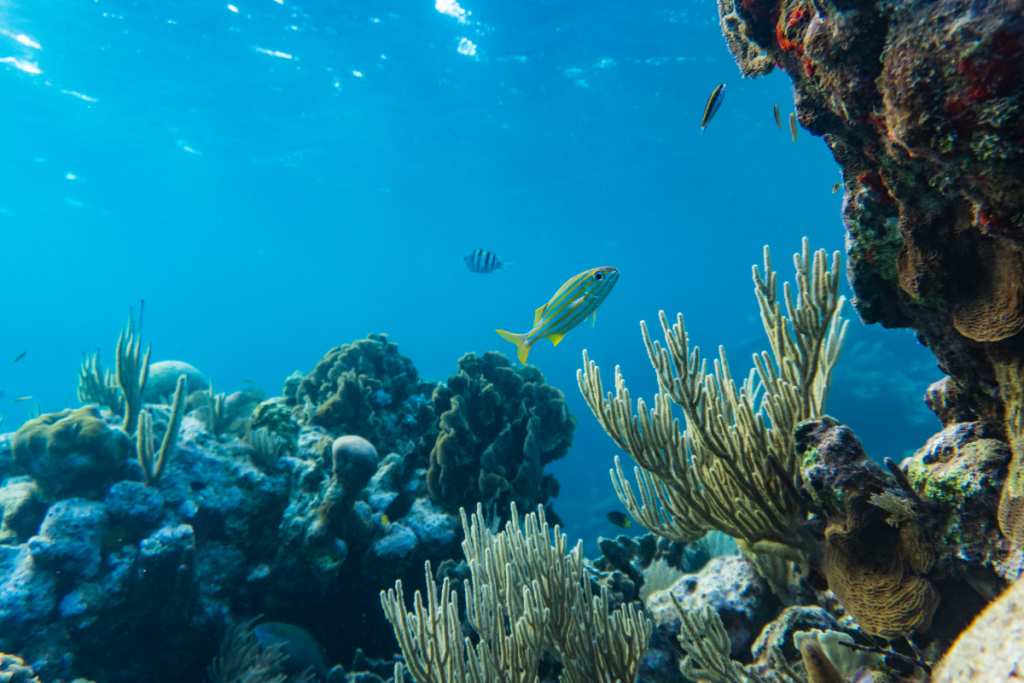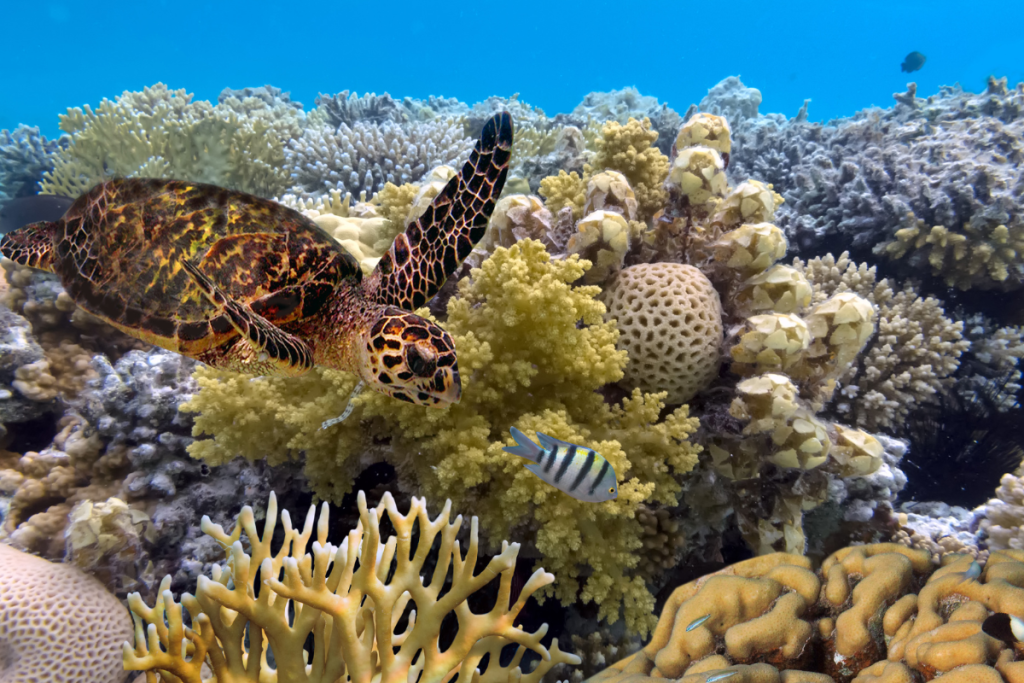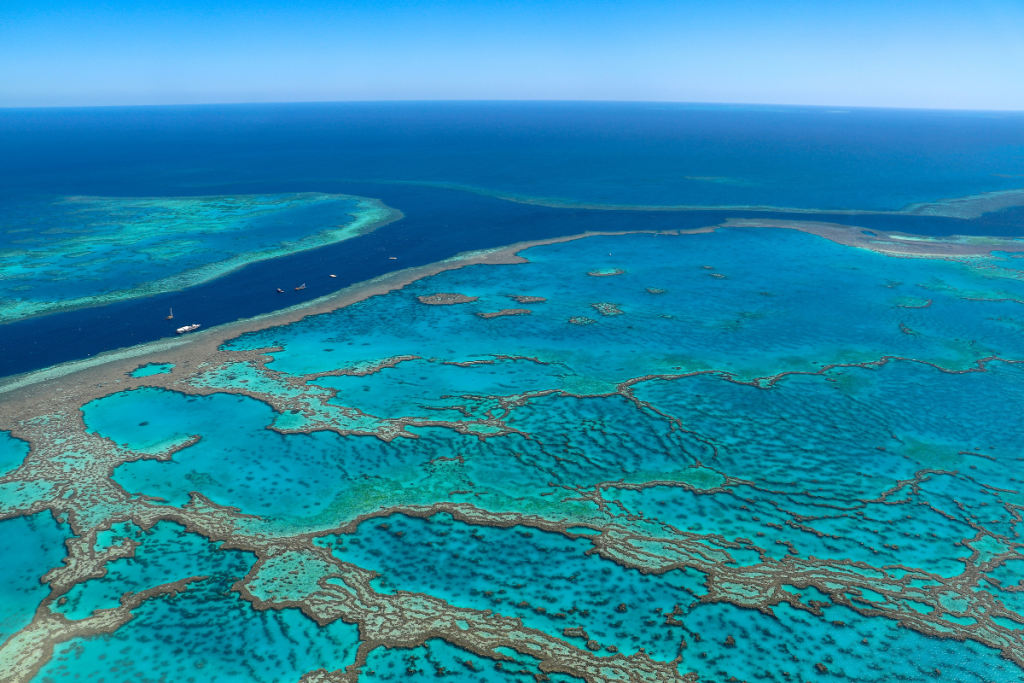Internationally renowned and revered as one of the world’s most spectacularly beautiful and diverse marine ecosystems, the Great Barrier Reef is valued by scientists and tourists alike.
Alongside the crystal clear waters, distinctive aquatic species and bright corals, the history behind the formation of the Great Barrier Reef and its unique geology also contribute to its appeal.
This article explores the Great Barrier Reef’s formation and geology in detail. It also looks at how environmental and human factors are threatening its health and what is being done to protect it for future generations.
Formation Of The Great Barrier Reef
Geological History
The geological history of the Great Barrier Reef covers millions of years. First forming around 25 million years ago in a shallow sea during the late Oligocene period, it continued to grow and recede as sea levels rose and fell over time.
The Reef as we know it today, is relatively young compared to its primary origins and was largely formed due to flooding on a coastal plain that became submerged during a swift sea-level rise between 6,000 to 20,000 years ago.
During the span of millions of years, the Great Barrier Reef has undergone continuous cycles of growth and decline. This has occurred due to the influence of factors including the sea level changes mentioned above, climate fluctuations, and geological activity such as tectonic plate movement.
The Role Of Plate Tectonics
The Great Barrier Reef’s formation is also attributable to the Australian tectonic plate movement which occurred during the Cenozoic Eastern Australia period of tectonic uplift.
This geologic uplift of the Earth’s surface (lithosphere) along Australia’s Eastern Coast in addition to basalt flows from volcanic eruptions formed the Coral Sea Basin and shallow seas from which the Great Barrier Reefs began to grow.
Not only experiencing uplift, subsidence (downward movement) also impacted the lithosphere, causing parts of the Great Barrier Reef to sink. This can be caused either through the settling of sediment on the reef or pressure from tectonic plate movement.
The interplay of uplift and subsidence has greatly influenced the growth of the reef over time as coral will only grow where the water depth is just right.
Geological Structure Of The Great Barrier Reef
Coral Reefs & Their Composition
The reef is an example of bioconstruction, where skeletal remains of marine organisms accumulate over time. All coral seen at the reef today is growing off a foundation of dead coral which dates back almost 20 million years.
Two primary forms of coral make up the Great Barrier Reef, hard corals and soft corals. The former are the builders of the reef structure and the latter are responsible for the diverse ecosystem and colour that the reef is known for.
A common misconception, corals are not plants, but animals that feed on symbiotic algae that live on them.
The reef’s protected, tropical location and bottom topography, created by uplift and subsidence alongside other geological factors make it an ideal environment in which coral can thrive. These include factors such as the reefs:
- Depth
- Exposure to ideal wave and current strengths
- Light permeance
- Temperature and
- Suspended sediments
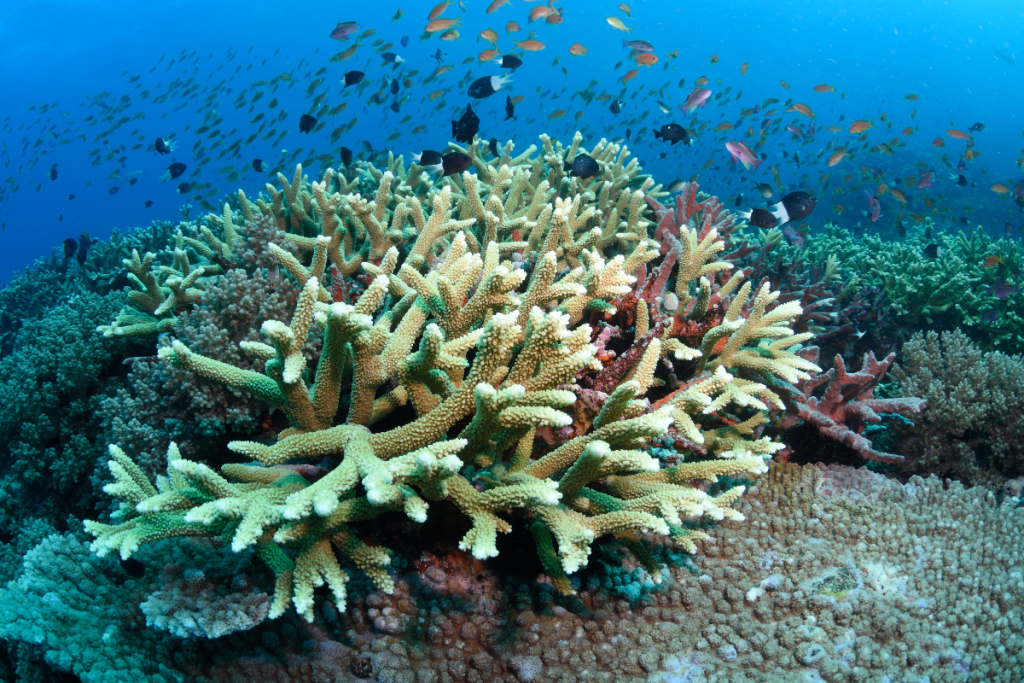
Submerged features
As noted, the seabed’s topography has greatly contributed to the reef’s uppermost visible structure and the establishment of its diverse ecosystem. However, the reef stretches far below the ocean surface, with many submarine canyons and valleys along its length.
These act as conduits for nutrients essential for the reef’s health and are also critical nursery and refuge sites for other marine life. This includes being home to vulnerable marine ecosystems such as cold-water corals and sponge gardens.
Environmental Threats To The Great Barrier Reef
Climate Change Effects
Like many ecosystems globally, the Great Barrier Reef is also greatly impacted by the effects of global warming. Coral bleaching and ocean acidification are two such effects threatening the health of the reef.
The leading cause of coral bleaching is the rise in ocean temperatures caused by climate change. The higher temperatures create stress in coral leading them to become white due to the loss of symbiotic algae and photosynthetic pigments. Bleaching typically leads to coral death which can in turn lead to the death of an entire reef.
Ocean acidification refers to a decrease in the pH of the ocean and is believed to be caused in large part by the uptake of carbon dioxide (CO2) from the atmosphere.
Sometimes called “osteoporosis of the sea” this increased acidity eats away at the minerals present in the shells and skeletons of marine life such as coral, oysters, clams, lobsters or similar.
Human Impact
Also linked to coral bleaching, pollution and sedimentation of the reef have several other concerning effects including the smothering of reefs, reduction of water quality and making corals more susceptible to disease.
Leading contributors to this pollution and sedimentation include:
- Soil runoff into rivers and creeks from erosion due to excessive tree clearing and overgrazing of grasslands
- Fertilisers, pesticides and herbicides washed into rivers and waterways
- Chemical spills and emissions from shipping vessels
- Plastic waste and other man-made rubbish
While the Great Barrier Reef is a protected marine habitat, overfishing and destructive fishing practices are still present and of concern. According to a World Heritage Briefing on the subject:
“The Great Barrier Reef faces a number of threats from fishing which occurs in approximately two-thirds of the property. Commercial fishing in particular is responsible for the incidental catch of threatened species such as dugongs, turtles, dolphins and sawfish, overfishing and illegal fishing.”
Physical damage to the reef and increased instances of coral disease have also been linked with fishing activity in the region, caused by the loss of fishing equipment and the anchoring of boats on the reef.
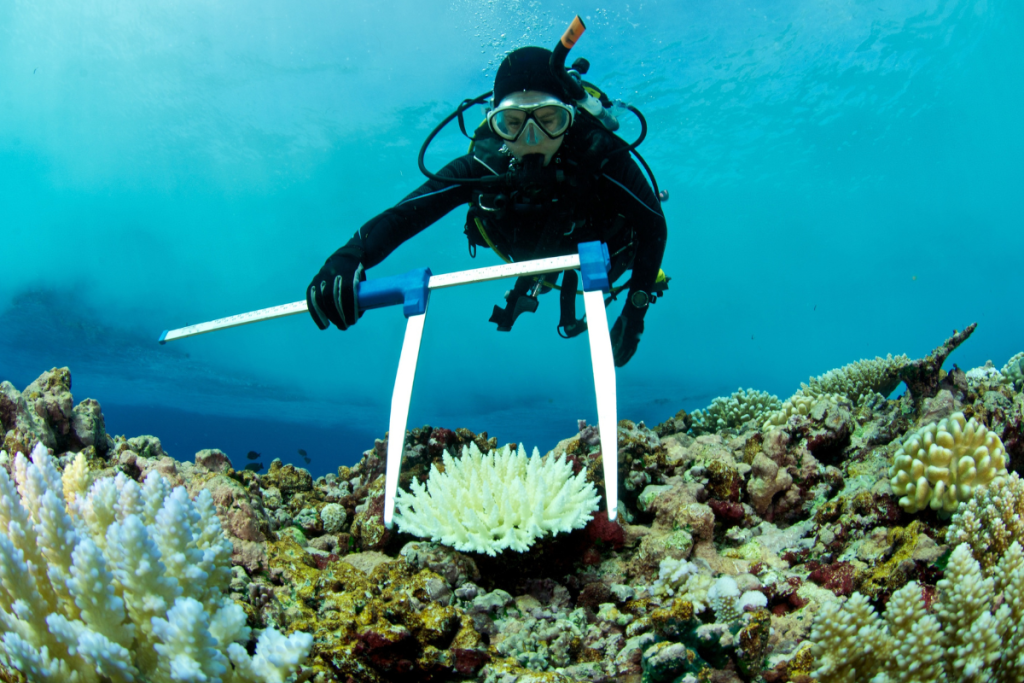
Conservation Efforts & Management Strategies
Recognising the importance of the Great Barrier Reef, the Australian Government, working with several interested and expert parties, is taking steps towards conservation. Implementing management strategies to reduce the human and environmental impacts on the reef, continued research and monitoring are also a priority.
UNESCO World Heritage Status
Aimed at recognising and conserving places on Earth that are of outstanding universal value to humanity, The Great Barrier Reef was awarded World Heritage Status in 1981. Holding enormous environmental and scientific value it also was recognised as having a rich indigenous history.
This status benefits the reef through support from the United Nations and access to global project management resources. It also serves to facilitate the creation of beneficial partnerships between government bodies, the private sector, and NGOs to acquire funding and achieve conservation goals.
Initiatives To Reduce Pollution & Mitigate Climate Change Effects
Several initiatives are underway to reduce pollution and mitigate climate change effects on the Great Barrier Reef. These efforts encompass a variety of strategies aimed at protecting and restoring the reef ecosystem and are largely led by the Australian Government in collaboration with traditional landowners, landholders, conservation groups, science industries and community members.
These include but are not limited to:
Reef Restoration and Adaptation Program (RRAP)
This initiative involves over 150 scientists from leading institutions working together to develop large-scale coral restoration techniques. This covers things such as deploying cooling and shading technologies to protect corals from bleaching, stabilising reef structures, and selectively breeding heat-tolerant corals to introduce into the reef.
Community Climate Action Projects
These projects, driven by local councils, community organisations, and Traditional Owners, aim to empower communities to engage in climate action.
For example, the Green Nourishment Program investigates seagrass as a nature-based solution for shoreline erosion. Other projects include developing greenhouse gas inventories for regional councils and creating collaborative research plans for managing local ecosystems
Citizen Science Programs
Citizen science initiatives involve collaboration between scientists and volunteers who engage in activities such as seagrass restoration and tidal wetland monitoring. By enhancing community involvement, data collection efforts are improved, restoration efforts are more impactful and conservation education is shared.
Educational & Behavioral Change Initiatives
Programs like “What Can I Do?” by CoralWatch, focus on promoting sustainable living and conservation through education and community involvement. These initiatives aim to foster behaviour change and develop long-term climate action strategies within local communities living near the reef.
Addressing Climate Change & Pollution
The Queensland Government is committed to addressing the impacts of climate change and pollution on the reef through multiple state-based programs and strategies, these include:
- Renewable Energy and Hydrogen Jobs Fund
- Reef Water Quality Program
- Shipping management plans
- Sustainable fisheries strategy
- Land-based management actions for farmers in reef catchment areas
The Future Of The Reef
Overall, while the Great Barrier Reef is showing the negative effects of both human and environmental factors, billions of dollars are spent annually towards its protection and proper management.
With a shared commitment to protecting it from small community groups and traditional landowners up to world-class scientists and international government bodies and organisations, the future of the reef is in the best possible hands. Ensuring everyone can enjoy its unique formation and geology and the spectacular ecosystem it supports for generations to come.

